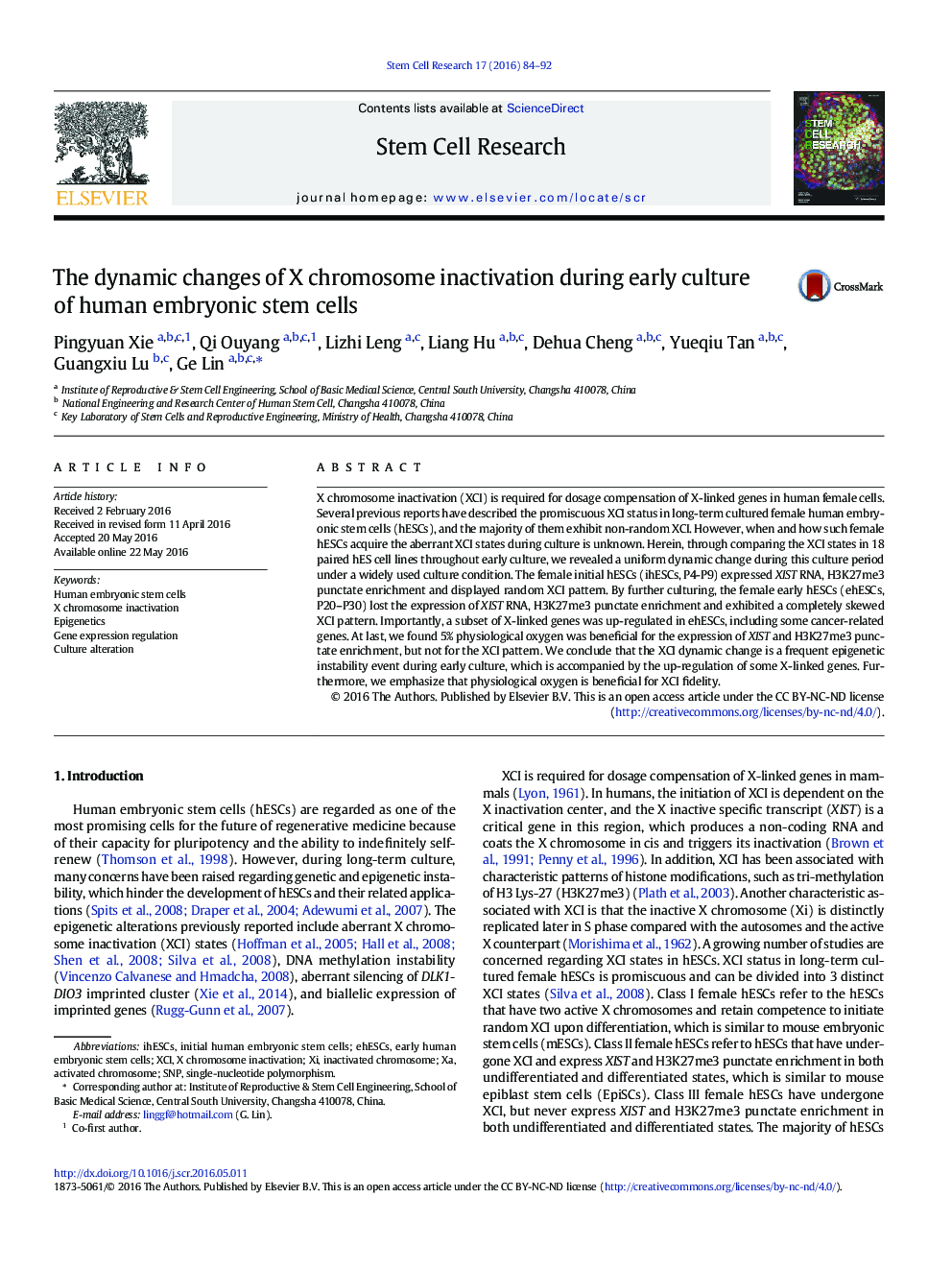| Article ID | Journal | Published Year | Pages | File Type |
|---|---|---|---|---|
| 2094105 | Stem Cell Research | 2016 | 9 Pages |
•XCI dynamic change is a frequent epigenetic instability event during early hESC culture.•A subset of X-linked genes was up-regulated in ehESCs, including some cancer-related genes.•5% oxygen was beneficial for XCI fidelity.
X chromosome inactivation (XCI) is required for dosage compensation of X-linked genes in human female cells. Several previous reports have described the promiscuous XCI status in long-term cultured female human embryonic stem cells (hESCs), and the majority of them exhibit non-random XCI. However, when and how such female hESCs acquire the aberrant XCI states during culture is unknown. Herein, through comparing the XCI states in 18 paired hES cell lines throughout early culture, we revealed a uniform dynamic change during this culture period under a widely used culture condition. The female initial hESCs (ihESCs, P4-P9) expressed XIST RNA, H3K27me3 punctate enrichment and displayed random XCI pattern. By further culturing, the female early hESCs (ehESCs, P20–P30) lost the expression of XIST RNA, H3K27me3 punctate enrichment and exhibited a completely skewed XCI pattern. Importantly, a subset of X-linked genes was up-regulated in ehESCs, including some cancer-related genes. At last, we found 5% physiological oxygen was beneficial for the expression of XIST and H3K27me3 punctate enrichment, but not for the XCI pattern. We conclude that the XCI dynamic change is a frequent epigenetic instability event during early culture, which is accompanied by the up-regulation of some X-linked genes. Furthermore, we emphasize that physiological oxygen is beneficial for XCI fidelity.
